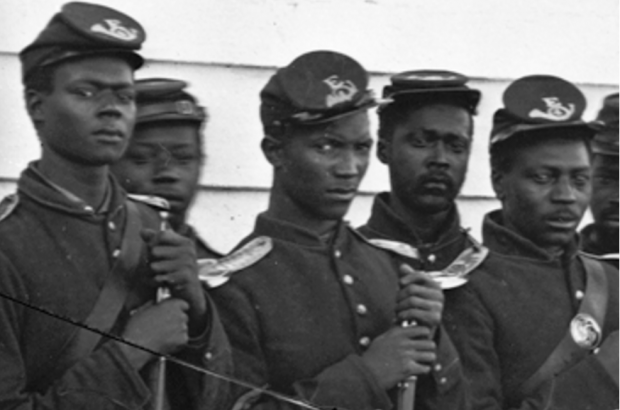
By Ben BeckerWhat we now know as Memorial Day began as “Decoration Day” in the immediate aftermath of the U.S. Civil War. It was a tradition initiated by former slaves to celebrate emancipation and commemorate those who died for that cause.
These days, Memorial Day is arranged as a day “without politics”—a general patriotic celebration of all soldiers and veterans, regardless of the nature of the wars in which they participated. This is the opposite of how the day emerged, with explicitly partisan motivations, to celebrate those who fought for justice and liberation.
The concept that the population must “remember the sacrifice” of U.S. service members, without a critical reflection on the wars themselves, did not emerge by accident. It came about in the Jim Crow period as the Northern and Southern ruling classes sought to reunite the country around apolitical mourning, which required erasing the “divisive” issues of slavery and Black citizenship. These issues had been at the heart of the struggles of the Civil War and Reconstruction.
To truly honor Memorial Day means putting the politics back in. It means reviving the visions of emancipation and liberation that animated the first Decoration Days. It means celebrating those who have fought for justice, while exposing the cruel manipulation of hundreds of thousands of U.S. service members who have been sent to fight and die in wars for conquest and empire.
As the U.S. Civil War came to a close in April 1865, Union troops entered the city of Charleston, S.C., where four years prior the war had begun. While white residents had largely fled the city, Black residents of Charleston remained to celebrate and welcome the troops, who included the TwentyFirst Colored Infantry. Their celebration on May 1, 1865, the first “Decoration Day,” later became Memorial Day.
Then, black Charlestonians in cooperation with white missionaries and teachers, staged an unforgettable parade of 10,000 people on the slaveholders’ race course. The symbolic power of the low-country planter aristocracy’s horse track (where they had displayed their wealth, leisure, and influence) was not lost on the freed people.
A New York Tribune correspondent witnessed the event, describing “a procession of friends and mourners as South Carolina and the United States never saw before.”At 9 a.m. on May 1, the procession stepped off led by 3,000 black schoolchildren carrying armloads of roses and singing “John Brown’s Body.” The children were followed by several hundred black women with baskets of flowers, wreaths and crosses.Then came black men marching in cadence, followed by contingents of Union infantry and other black and white citizens. As many as possible gathered in the cemetery enclosure; a childrens’ choir sang “We’ll Rally around the Flag,” the “Star-Spangled Banner,” and several spirituals before several black ministers read from scripture.
Blight’s award-winning Race and Reunion: The Civil War in American Memory (2001) explained how three “overall visions of Civil War memory collided” in the decades after the war.
The first was the emancipationist vision, embodied in African Americans’ remembrances and the politics













